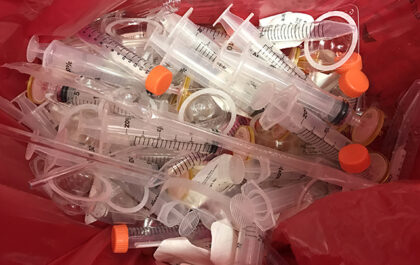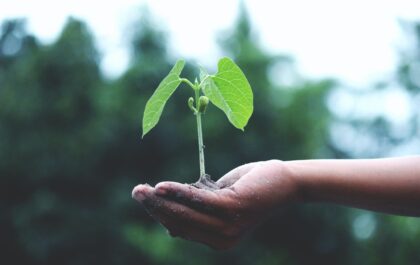Water conservation has become an increasingly important issue in recent years, especially with growing populations and the effects of climate change putting more strain on water supplies. Older homes, like those found in towns and citieswith outdated water supply and plumbing systems, use more water than necessary. Despite Michigan being known as the Great Lakes State, several cities struggle with groundwater scarcity and old infrastructure that hampers water supply. In old towns like Muskegon, upgrading to water-efficient appliances and fixtures can significantly reduce indoor water use.
Water conservation is beneficial no matter where you live, but especially in regions prone to drought and scarcity. Implementing simple water-saving techniques in your home can reduce your water footprint and contribute to a more sustainable environment. Here are tips for conserving water in your house:
Table of Contents
1. Install low-flow faucet aerators
Installing low-flow aerators on bathroom and kitchen faucets is one of the simplest ways to start conserving water consumption in your home. These small devices restrict water flow through the faucet while maintaining good water pressure. Opt for WaterSense-labeled models; these are designed to save water without affecting performance. Models that earn the WaterSense label show a 20% reduction in flow rate compared to standard models.
Low-flow aerators screw on easily in minutes and require no special tools or expertise. Just make sure to pick the appropriately sized aerator for your faucet.
2. Install high-efficiency showerheads
Changing the showerhead can save over 2,000 gallons of water per year. These modifications restrict water flow to no more than 2.0 gallons per minute versus older showerheads thatallow 2.5 gallons per minute or more to flow.
Considering recent reports of drought [AA1] in Muskegon County, this home improvement can benefit homeowners and communities. Locals can look for a Muskegon shower replacement company to get an upgrade.
3. Replace old toilets
Upgrading from water-guzzling pre-1994 toilets to new low-flow models can dramatically cut indoor water usage. Older toilets use 3.5 gallons per flush or even more, while contemporary high-efficiency toilets use 1.28 gallons or less per flush. Replacing just one outdated toilet with a WaterSense-certified model can reduce household water usage by 20-60%.
When shopping for a new low-flow toilet, look for the WaterSense label to ensure excellent flushing performance. WaterSense toilets must pass rigorous testing to clear waste effectively while using 20% less water than the current federal standard of 1.6 gallons per flush. Installing a WaterSense toilet brings immediate water savings while providing top flushing power.
4. Fix leaks
Even minor leaks add up to major water waste over time. A faucet drip leaking just one drop per second wastes more than 3,000 gallons per year. That’s why it’s important to fix leaks promptly before they worsen. Do a thorough check of all faucets, showerheads, and toilets.
Replace worn-out washers and gaskets on drips and tighten connections. Make any necessary repairs to stop leaks for good. It’s also smart to periodically check your water meter readings to detect hidden leaks when no water is running. Catching and fixing leaks quickly conserves water and saves you money on utility bills.
5. Install water-saving appliances
When buying new appliances, prioritize water efficiency by looking for ENERGY STAR models; these use about 14 gallons of water per load. Modern washing machines, in particular, use significantly less water than older models – front-loading machines use 35-50% less water per load. New dishwashers also incorporate water-saving features like soil sensors that adjust cycle length based on dirty dishes.
When shopping for fridges, look for models with ice makers with the ENERGY STAR label for water efficiency. Choosing water-smart appliances brings long-term water savings to your home.
6. Run full loads
Always run your washing machine and dishwasher only when fully loaded. This avoids wasting water and energy on small loads. You can also adjust water levels on your washing machine to match load sizes if your model has that setting.
When washing dishes by hand, fill one side of the sink for washing and one for rinsing rather than letting water run continuously.
7. Don’t use the toilet as a dustbin
Avoid flushing tissues, cotton balls, and other trash down the toilet. This wastes a significant amount of water when you flush and can lead to clogs. Always dispose of trash in the garbage can where it belongs – not the toilet. Educate children not to treat the toilet as a dustbin. You’ll also prevent plumbing problems.
8. Turn off the tap while brushing your teeth
Letting the water run while brushing your teeth is a big waste. Turn on the faucet to briefly wet your toothbrush and rinse when finished. Turning off the water while brushing saves over 200 gallons per month. Make it a habit, especially with kids, to turn off the tap during brushing. This simple habit saves a significant amount of water on a daily basis.
9. Water plants efficiently
When watering plants, use soaker hoses or drip irrigation systems to target the roots. Water in the early morning or evening when less water is lost to evaporation. Adjust sprinklers to avoid overspray on paved areas. And apply mulch around plants to retain moisture in the soil. Choosing the right watering methods and scheduling makes a big difference in conserving water in the garden.
10. Wash fruits and vegetables in a basin
Rather than letting the tap run while rinsing produce, fill a basin and wash them in the collected water. Reuse the water to water houseplants if it’s free of chemicals. Washing produce in a filled basin rather than under running water saves water and keeps nutrients out of the drain. Teach kids to follow this simple habit to involve themin water conservation.
Conclusion
Implementing these easy and effective water-saving measures in your home conserves our precious water supply, saves you money on utility bills, and sets a sustainable example for your community. Conserving water should become part of everyday home life. With simple upgrades and habit changes, your household can use dramatically less water and make a real difference.
Related posts
When was the first presidential election in the US?
The election process in the world’s most powerful nation, the US, has come a long way. Various amendments have been made to the Constitution that allowed black men, white women and other disadvantaged groups to participate in the elections. Further amendments during the 60s and…
Tips & Trick For Healthy Glowing Skin
Lorem ipsum dolor sit amet, consectetur adipiscing elit. Nam laoreet, nunc et accumsan cursus, neque eros sodales lectus, in fermentum libero dui eu lacus. Nam lobortis facilisis sapien non aliquet. Aenean ligula urna, vehicula placerat sodales vel, tempor et orci. Donec molestie metus a sagittis…
My Fight With Depression. Concussions
Lorem ipsum dolor sit amet, consectetur adipiscing elit. Nam laoreet, nunc et accumsan cursus, neque eros sodales lectus, in fermentum libero dui eu lacus. Nam lobortis facilisis sapien non aliquet. Aenean ligula urna, vehicula placerat sodales vel, tempor et orci. Donec molestie metus a sagittis…
Top 10 most visited tourist places in the world
Lorem ipsum dolor sit amet, consectetur adipiscing elit. Nam laoreet, nunc et accumsan cursus, neque eros sodales lectus, in fermentum libero dui eu lacus. Nam lobortis facilisis sapien non aliquet. Aenean ligula urna, vehicula placerat sodales vel, tempor et orci. Donec molestie metus a sagittis…
How Digital Health Technology Is Beneficial?
Digital health revolves around the usage of diverse technological platforms including mobile health, teen health, configurable remote patient monitoring, etc to improve the connection between the patients and the doctors. Across the healthcare system, the horizon and scope of digital health have helped create opportunities…
How Latest Farmtrac Tractors are Improving Farming in India?
India mostly relies on farming, and a large part of the population depends on it for their livelihoods. Recently, there’s been a big shift towards using modern farming techniques and machinery to make farming more productive and efficient. A good example of this is the…
Dispelling Myths: Demystifying Rx Waste and Expiration Dates – WasteX Pharmaceutical Waste Disposal Separates Fact from Fiction
The specter of “expired” medication looms large, conjuring images of potent chemicals wreaking havoc on water sources and ecosystems. But before you panic toss that bottle of pills, let’s delve into the truth about pharmaceutical waste and expiration dates, separating fact from fiction. At WasteX…
Sustainable Living in Memphis: Green Initiatives and Eco-Friendly Hotspots
Memphis, a city known for its rich cultural heritage and vibrant atmosphere, is increasingly becoming a hub for sustainable living. As environmental awareness continues to grow, residents and businesses in Memphis are embracing green initiatives and fostering eco-friendly practices. Let’s explore the city’s commitment to…
Today's pick
Hot topics
Stay connected
Meet the Author

Gillion is a multi-concept WordPress theme that lets you create blog, magazine, news, review websites. With clean and functional design and lots of useful features theme will deliver amazing user experience to your clients and readers.
Learn moreCategories
- Animals (7)
- Apps & Softwares (8)
- Automotive (8)
- Beauty (8)
- Business (141)
- Cars (12)
- Cartoon (3)
- Cook (4)
- Cooking (1)
- Design (8)
- Economy (6)
- EDUCATION (25)
- Entertainment (16)
- Fashion (23)
- Fitness (2)
- Food (16)
- Gaming (51)
- Guide (20)
- Health (119)
- Home (52)
- Home improvement (12)
- Interior (3)
- Law (16)
- Life (1)
- LifeStyle (99)
- Marketing (5)
- Motivation (9)
- Movie (6)
- Movies (1)
- Music (3)
- News (8)
- Painting Art (1)
- People (15)
- Photography (7)
- Review (113)
- Services (7)
- Social Media (6)
- Sport (9)
- Sports (12)
- Style (10)
- Swimming (1)
- Tech (125)
- Travel (26)
- Uncategorized (17)
- Vape (5)
- Western (3)
- World (2)










